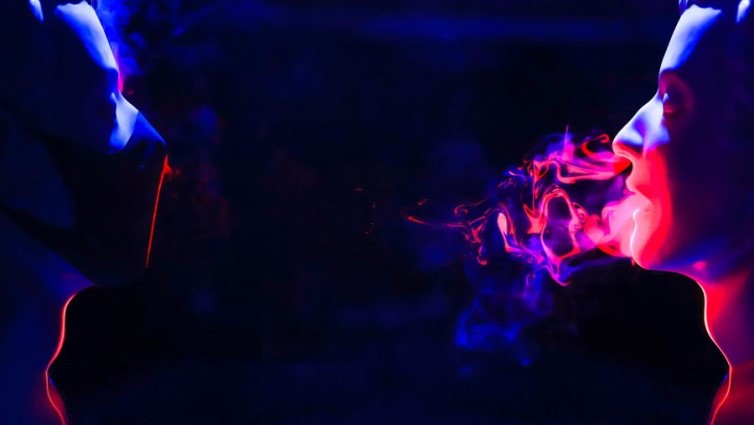Resources
 Part of the Oxford Instruments Group
Part of the Oxford Instruments Group
Expand
Collapse
 Part of the Oxford Instruments Group
Part of the Oxford Instruments Group
Aerosols are a dispersion of liquid droplets or solid particles in a gaseous phase. Aerosols are prevalent in both indoor and outdoor environments and are emitted from both natural and anthropogenic sources. Aerosols play a significant role in both climate and human health.
Aerosols are emitted by people when we breathe, speak, sneeze and cough and aerosol droplets in the surrounding environment are inhaled with every breath.1 The penetration depth of aerosol inhaled into the respiratory system is dependent on the size of the droplets or particles and their hygroscopic response.2 Like many other viruses that cause respiratory illnesses, aerosol droplets are likely to play a role in the airborne transmission of COVID-19 (SARS-Cov-2) transmitted by infectious individuals. Asymptomatic carriers have also been reported to release large quantities of virus laden aerosol droplets.3
In tandem with developing pharmaceutical drug treatment strategies and evaluating vaccine candidates, non-pharmaceutical approaches to reducing COVID-19 infection rates include social distancing, and the recommended use of face coverings indoors when social distancing is not possible. These steps aim to reduce airborne transmission of the virus. However, the data around airborne transmission of SARS-Cov-2 is limited meaning that further data is critical to develop effective public health messaging that is required for the longer-term management of this virus within the population.
A team of researchers from BCO (Blackrock Castle Observatory), CAPPA (Centre for Advanced Photonics and Process Analysis) and CIT (Cork Institute of Technology) are investigating the efficacy of face coverings in reducing aerosol transmission. While astrophysics may not initially sound like the expected field of research for this biological study, the Photometry imaging technique the team normally apply searching for exoplanets and blackholes is well suited to studying plumes of aerosols. Often imaging techniques that start off in one discipline find an effective application elsewhere e.g. medical diagnostics or industrial use.
The group used medical dummies placed on an optical bench to create a model that would replicate the human breathing cycle and release aerosols via the mouth and nose. Lasers were configured to illuminate the emitted aerosols so that the plume profiles could be analyzed. This set-up made it possible to obtain reproducible results under different conditions including, with and without application of a mask on the mouth of the dummy. Furthermore, it was also possible to study the effect of other important aspects that could affect the efficacy of face coverings including the fit of the mask, and the effect of different materials.
An important part of these experiments was making precise measurements of the aerosol profiles as these would be used for the data analysis of each of the different environmental conditions. For this, Dr. Alan Glitinan from BCO contacted Dr. Colin Coates at Andor Technology to determine what imaging camera would allow for the quantitative measurements that were needed over a much wider a field of view than was possible using their current iXon EMCCD cameras. The Sona back-illuminated sCMOS camera was selected as this camera can provide sensitive, high speed measurements over the widest possible field of view (32 mm).

Above: Images showing the aerosol emission data being captured. Aerosols are emitted by the medical dummy during the breathing cycle with emitted aerosols being illuminated by lasers. This can be repeated for different conditions and the data captured using the Sona back-illuminated sCMOS camera for subsequent data analysis.
The headline image, titled Talking Heads, clearly illustrates the striking difference in the concentration of aerosols emitted into the environment between a medical dummy fitted with and without a mask. This image won the SFI Research Image of The Year 2020 award and demonstrates that a well fitted mask significantly reduces the number of aerosol droplets released into the air, thus reducing the risk of Covid-19 transmission via aerosol droplets. The take home message from this study and the current scientific literature is that wearing a mask makes a difference.

Image Caption: “Talking heads” Image courtesy of Blackrock Castle Observatory, Cork
Key questions that could be considered in the future by the group include the impact of the environmental conditions such as temperature and humidity and examining whether the composition of the nebulized solution closely enough mimics saliva. This research by the Blackrock observatory and their partners at CAPPA and CIT is ongoing, as is the work by other aerosol research groups, and the wider scientific community who have turned their experience in other areas to help better understand COVID-19 from transmission to infection, recovery and beyond. Clearly, this research endeavor is highly interdisciplinary, key insights are required from physics, chemistry, and biology, utilizing sophisticated computational tools to understand and elucidate the mechanisms of disease transfer.
Find out more about the research groups involved
Related Information
References
Date: Dec-20
Author: Dr Alan Mullan & Dr Aleksandra Marsh
Category: Technical Article
